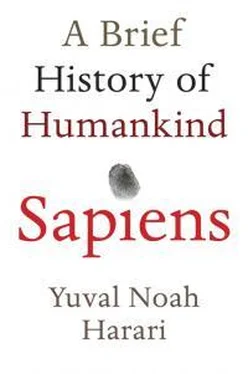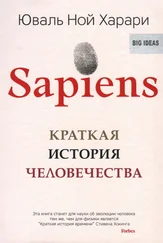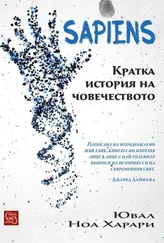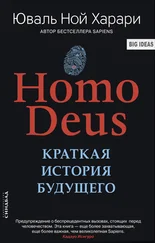2Timothy F. Flannery, The Future Eaters: An Ecological History of the Australasian Lands and Peoples (Port Melbourne: Reed Books Australia, 1994); Anthony D. Barnosky et al., ‘Assessing the Causes of Late Pleistocene Extinctions on the Continents’, Science 306:5693 (2004): 70–5; Barry W. Brook and David M. J. S. Bowman, ‘The Uncertain Blitzkrieg of Pleistocene Megafauna’, Journal of Biogeography 31:4 (2004), 517–23; Gifford H. Miller et al., ‘Ecosystem Collapse in Pleistocene Australia and a Human Role in Megafaunal Extinction’, Science 309:5732 (2005), 287–90; Richard G. Roberts et al., ‘New Ages for the Last Australian Megafauna: Continent Wide Extinction about 46,000 Years Ago’, Science 292:5523 (2001), 1,888–92.
3Stephen Wroe and Judith Field, ‘A Review of Evidence for a Human Role in the Extinction of Australian Megafauna and an Alternative Explanation’, Quaternary Science Reviews 25:21–2 (2006), 2,692–703; Barry W. Brook et al., ‘Would the Australian Megafauna Have Become Extinct if Humans Had Never Colonised the Continent? Comments on “A Review of the Evidence for a Human Role in the Extinction of Australian Megafauna and an Alternative Explanation” by S. Wroe and J. Field’, Quaternary Science Reviews 26:3–4 (2007), 560–4; Chris S. M. Turney et al., ‘Late-Surviving Megafauna in Tasmania, Australia, Implicate Human Involvement in their Extinction’, Proceedings of the National Academy of Sciences 105:34 (2008), 12,150–3.
4John Alroy, ‘A Multispecies Overkill Simulation of the End-Pleistocene Megafaunal Mass Extinction, Science , 292:5523 (2001), 1,893–6; O’Connel and Allen, ‘Pre-LGM Sahul’, 400–1.
5L. H. Keeley, ‘Proto-Agricultural Practices Among Hunter-Gatherers: A Cross-Cultural Survey’, in Last Hunters, First Farmers: New Perspectives on the Prehistoric Transition to Agriculture , ed. T. Douglas Price and Anne Birgitte Gebauer (Santa Fe: School of American Research Press, 1995), 243–72; R. Jones, ‘Firestick Farming’, Australian Natural History 16 (1969), 224–8.
6David J. Meitzer, First Peoples in a New World: Colonizing Ice Age America (Berkeley: University of California Press, 2009).
7Paul L. Koch and Anthony D. Barnosky, ‘Late Quaternary Extinctions: State of the Debate’, Annual Review of Ecology, Evolution, and Systematics 37 (2006), 215–50; Anthony D. Barnosky et al., ‘Assessing the Causes of Late Pleistocene Extinctions on the Continents’, 70–5.
5 History’s Biggest Fraud
1The map is based mainly on: Peter Bellwood, First Farmers: The Origins of Agricultural Societies (Malden: Blackwell Publishing, 2005).
2Jared Diamond, Guns, Germs, and Steel: The Fates of Human Societies (New York: W. W. Norton, 1997).
3Gat, War in Human Civilization , 130–1; Robert S. Walker and Drew H. Bailey, ‘Body Counts in Lowland South American Violence’, Evolution and Human Behavior 34 (2013), 29–34.
4Katherine A. Spielmann, ‘A Review: Dietary Restriction on Hunter-Gatherer Women and the Implications for Fertility and Infant Mortality’, Human Ecology 17:3 (1989), 321–45. See also: Bruce Winterhalder and Eric Alder Smith, ‘Analyzing Adaptive Strategies: Human Behavioral Ecology at Twenty-Five’, Evolutionary Anthropology 9:2 (2000), 51–72.
5Alain Bideau, Bertrand Desjardins and Hector Perez-Brignoli (eds.), Infant and Child Mortality in the Past (Oxford: Clarendon Press, 1997); Edward Anthony Wrigley et al., English Population History from Family Reconstitution, 1580–1837 (Cambridge: Cambridge University Press, 1997), 295–6, 303.
6Manfred Heun et al., ‘Site of Einkorn Wheat Domestication Identified by DNA Fingerprints’, Science 278:5341 (1997), 1,312–14.
7Charles Patterson, Eternal Treblinka: Our Treatment of Animals and the Holocaust (New York: Lantern Books, 2002), 9–10; Peter J. Ucko and G. W. Dimbleby (eds.), The Domestication and Exploitation of Plants and Animals (London: Duckworth, 1969), 259.
8Avi Pinkas (ed.), Farmyard Animals in Israel – Research, Humanism and Activity (Rishon Le-Ziyyon: The Association for Farmyard Animals, 2009 [Hebrew]), 169–99; “Milk Production – the Cow’ [Hebrew], The Dairy Council, accessed 22 March 2012, http://www.milk.org.il/cgi-webaxy/sal/sal.pl?lang=he&ID=645657_milk&act=show&dbid=katavot&dataid=cow.htm.
9Edward Evan Evans-Pritchard, The Nuer: A Description of the Modes of Livelihood and Political Institutions of a Nilotic People (Oxford: Oxford University Press, 1969); E. C. Amoroso and P. A. Jewell, ‘The Exploitation of the Milk-Ejection Reflex by Primitive People’, in Man and Cattle: Proceedings of the Symposium on Domestication at the Royal Anthropological Institute, 24–26 May 1960 , ed. A. E. Mourant and F. E. Zeuner (London: The Royal Anthropological Institute, 1963), 129–34.
10Johannes Nicolaisen, Ecology and Culture of the Pastoral Tuareg (Copenhagen: National Museum, 1963), 63.
6 Building Pyramids
1Angus Maddison, The World Economy , vol. 2 (Paris: Development Centre of the Organization of Economic Co-operation and Development, 2006), 636; ‘Historical Estimates of World Population’, U.S. Census Bureau, accessed 10 December 2010, http://www.census.gov/ipc/www/worldhis.html.
2Robert B. Mark, The Origins of the Modern World: A Global and Ecological Narrative (Lanham, MD: Rowman & Littlefield Publishers, 2002), 24.
3Raymond Westbrook, ‘Old Babylonian Period’, in A History of Ancient Near Eastern Law , vol. 1, ed. Raymond Westbrook (Leiden: Brill, 2003), 361–430; Martha T. Roth, Law Collections from Mesopotamia and Asia Minor , 2nd edn (Atlanta: Scholars Press, 1997), 71–142; M. E. J. Richardson, Hammurabi’s Laws: Text, Translation and Glossary (London: T & T Clark International, 2000).
4Roth, Law Collections from Mesopotamia , 76.
5Ibid., 121.
6Ibid., 122–3.
7Ibid., 133–3.
8Constance Brittaine Bouchard, Strong of Body, Brave and Noble: Chivalry and Society in Medieval France (New York: Cornell University Press, 1998), 99; Mary Martin McLaughlin, ‘Survivors and Surrogates: Children and Parents from the Ninth to Thirteenth Centuries’, in Medieval Families: Perspectives on Marriage, Household and Children , ed. Carol Neel (Toronto: University of Toronto Press, 2004), 81 n.; Lise E. Hull, Britain’s Medieval Castles (Westport: Praeger, 2006), 144.
7 Memory Overload
1Andrew Robinson, The Story of Writing ( New York : Thames and Hudson, 1995), 63; Hans J. Nissen, Peter Damerow and Robert K. Englung, Archaic Bookkeeping: Writing and Techniques of Economic Administration in the Ancient Near East (Chicago, London: The University of Chicago Press, 1993), 36.
2Marcia and Robert Ascher, Mathematics of the Incas – Code of the Quipu (New York: Dover Publications, 1981).
3Gary Urton, Signs of the Inka Khipu (Austin: University of Texas Press, 2003); Galen Brokaw, A History of the Khipu (Cambridge: Cambridge University Press, 2010).
4Stephen D. Houston (ed.), The First Writing: Script Invention as History and Process (Cambridge: Cambridge University Press, 2004), 222.
Читать дальше



![Юваль Ной Харари - Sapiens. Краткая история человечества [litres]](/books/34310/yuval-noj-harari-sapiens-kratkaya-istoriya-cheloveche-thumb.webp)





![Юваль Ной Харари - 21 урок для XXI века [Версия с комментированными отличиями перевода]](/books/412481/yuval-noj-harari-21-urok-dlya-xxi-veka-versiya-s-ko-thumb.webp)


